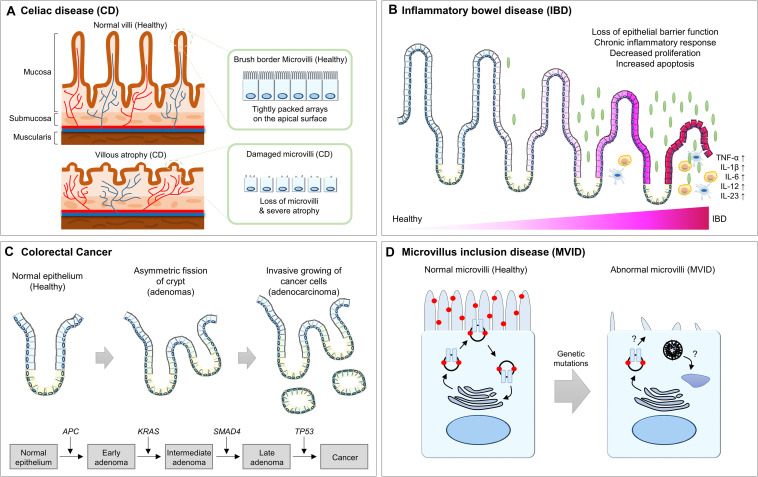FIGURE 4.
Summary of the abnormalities of intestinal epithelium in human diseases. (A) The healthy intestinal epithelium is compartmentalized into crypt-villus structures and consists of a tightly packed array of microvilli. In CD patients, villus atrophy causes the surface area reduction of the intestinal epithelium. (B) In IBD patients, chronic inflammation results in architectural abnormalities of the intestinal epithelium, which leads to distinct morphological changes within the intestinal epithelium. (C) In CRC patients, hyperplasia of poorly differentiated intestinal epithelial cells and invasion into the submucosal layer for metastasis is frequently observed. (D) In MVID patients, microvilli are distorted or absent and are instead accumulated with microvillus inclusions, which are formed by a yet unresolved mechanism. CD, celiac disease; IBD, inflammatory bowel disease; CRC, colorectal cancer; APC, adenomatous polyposis coli; MVID, microvillus inclusion disease.

